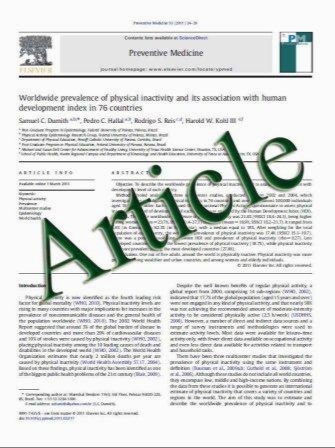LifeGene—a large prospective population-based study of global relevance
- نوع فایل : کتاب
- زبان : انگلیسی
- مؤلف : Catarina Almqvist Hans-Olov Adami Paul W. Franks Leif Groop Eri Ingelsson Juha Kere Lauren Lissner Jan-Eric Litton Markus Maeurer Kar
- چاپ و سال / کشور: 2010
Description
Studying gene-environment interactions requires that the amount and quality of the lifestyle data is comparable to what is available for the corresponding genomic data. Sweden has several crucial prerequisites for comprehensive longitudinal biomedical research, such as the personal identity number, the universally available national health care system, continuously updated population and health registries and a scientifically motivated population. LifeGene builds on these strengths to bridge the gap between basic research and clinical applications with particular attention to populations, through a unique design in a research-friendly setting. LifeGene is designed both as a prospective cohort study and an infrastructure with repeated contacts of study participants C. Almqvist (&) H.-O. Adami E. Ingelsson J.-E. Litton J. Palmgren A. Ploner G. Tybring N. L. Pedersen (&) Department of Medical Epidemiology and Biostatistics, Karolinska Institutet, Box 281, SE-171 77 Stockholm, Sweden e-mail: catarina.almqvist@ki.se N. L. Pedersen e-mail: nancy.pedersen@ki.se C. Almqvist Astrid Lindgren Children’s Hospital, Karolinska University Hospital, Stockholm, Sweden H.-O. Adami Department of Epidemiology, Harvard School of Public Health, Boston, MA, USA P. W. Franks Department of Public Health & Clinical Medicine, Section for Medicine, Umea° University Hospital Sweden, Umea°, Sweden P. W. Franks Department of Clinical Sciences, Genetic and Molecular Epidemiology Unit, Ska°ne University Hospital, Lund University, Malmo, Sweden L. Groop Department of Clinical Sciences, Diabetes and Endocrinology Unit, Lund University, Lund, Sweden J. Kere Department of Biosciences and Nutrition, Karolinska Institutet, Huddinge, Sweden L. Lissner Department of Public Health and Community Medicine, University of Gothenburg, Gothenburg, Sweden M. Maeurer Department of Microbiology, Tumor and Cell Biology, Karolinska Institutet, Stockholm, Sweden M. Maeurer Swedish Institute for Infectious Disease Control, Stockholm, Sweden K. Michae¨lsson Department of Surgical Sciences, Uppsala University, Uppsala, Sweden J. Palmgren Department of Mathematical Statistics, Stockholm University, Stockholm, Sweden G. Pershagen Institute of Environmental Medicine, Karolinska Institutet, Stockholm, Sweden P. F. Sullivan Department of Genetics, University of North Carolina at Chapel Hill, Chapel Hill, NC, USA 123 Eur J Epidemiol (2011) 26:67–77 DOI 10.1007/s10654-010-9521-x approximately every 5 years. Index persons aged 18–45 years old will be recruited and invited to include their household members (partner and any children). A comprehensive questionnaire addressing cutting-edge research questions will be administered through the web with short follow-ups annually. Biosamples and physical measurements will also be collected at baseline, and readministered every 5 years thereafter. Event-based sampling will be a key feature of LifeGene. The householdbased design will give the opportunity to involve young couples prior to and during pregnancy, allowing for the first study of children born into cohort with complete pre-and perinatal data from both the mother and father. Questions and sampling schemes will be tailored to the participants’ age and life events. The target of LifeGene is to enrol 500,000 Swedes and follow them longitudinally for at least 20 years.
Eur J Epidemiol (2011) 26:67–77 DOI 10.1007/s10654-010-9521-x Received: 14 June 2010 / Accepted: 2 November 2010 / Published online: 21 November 2010


